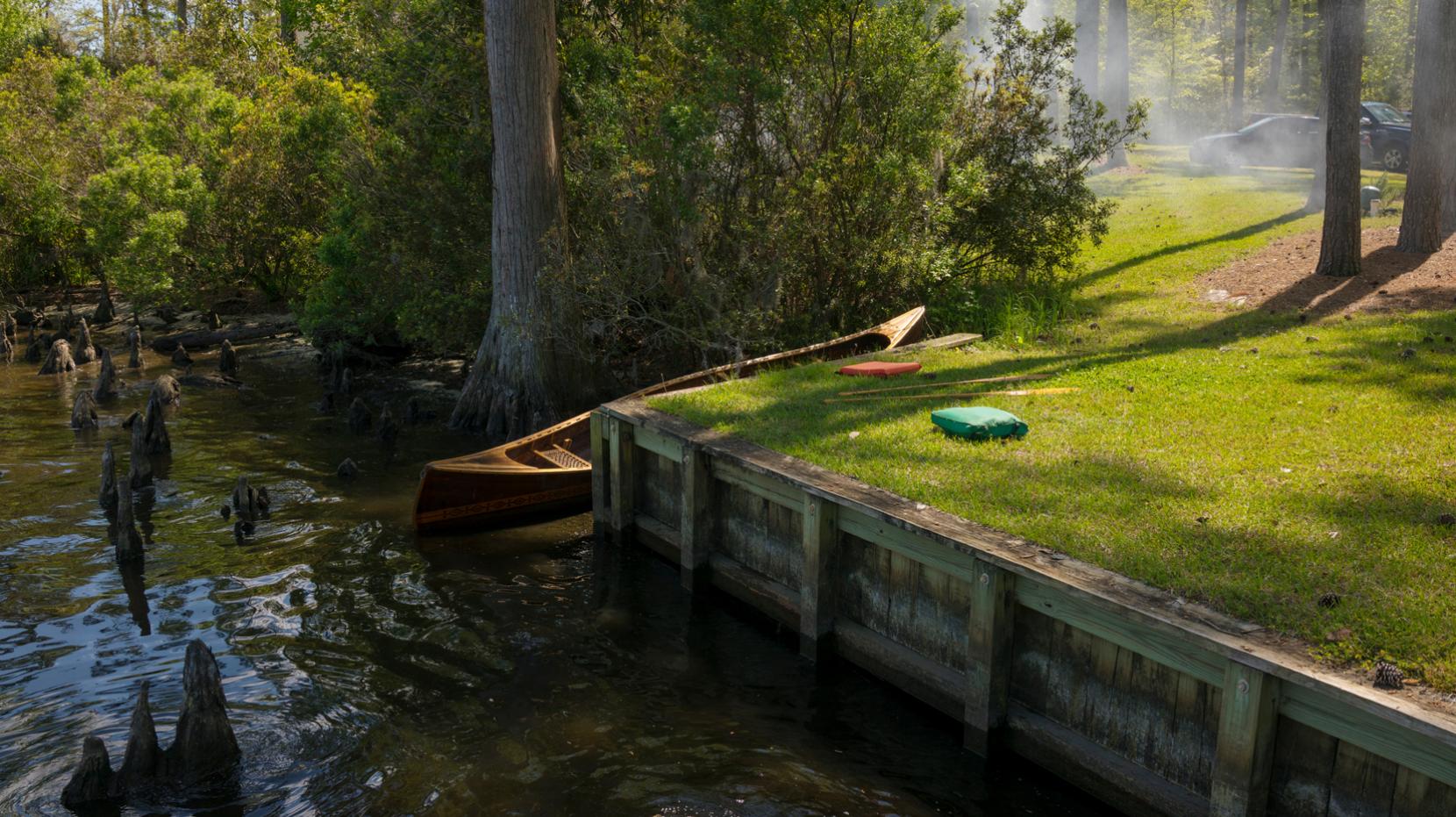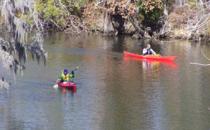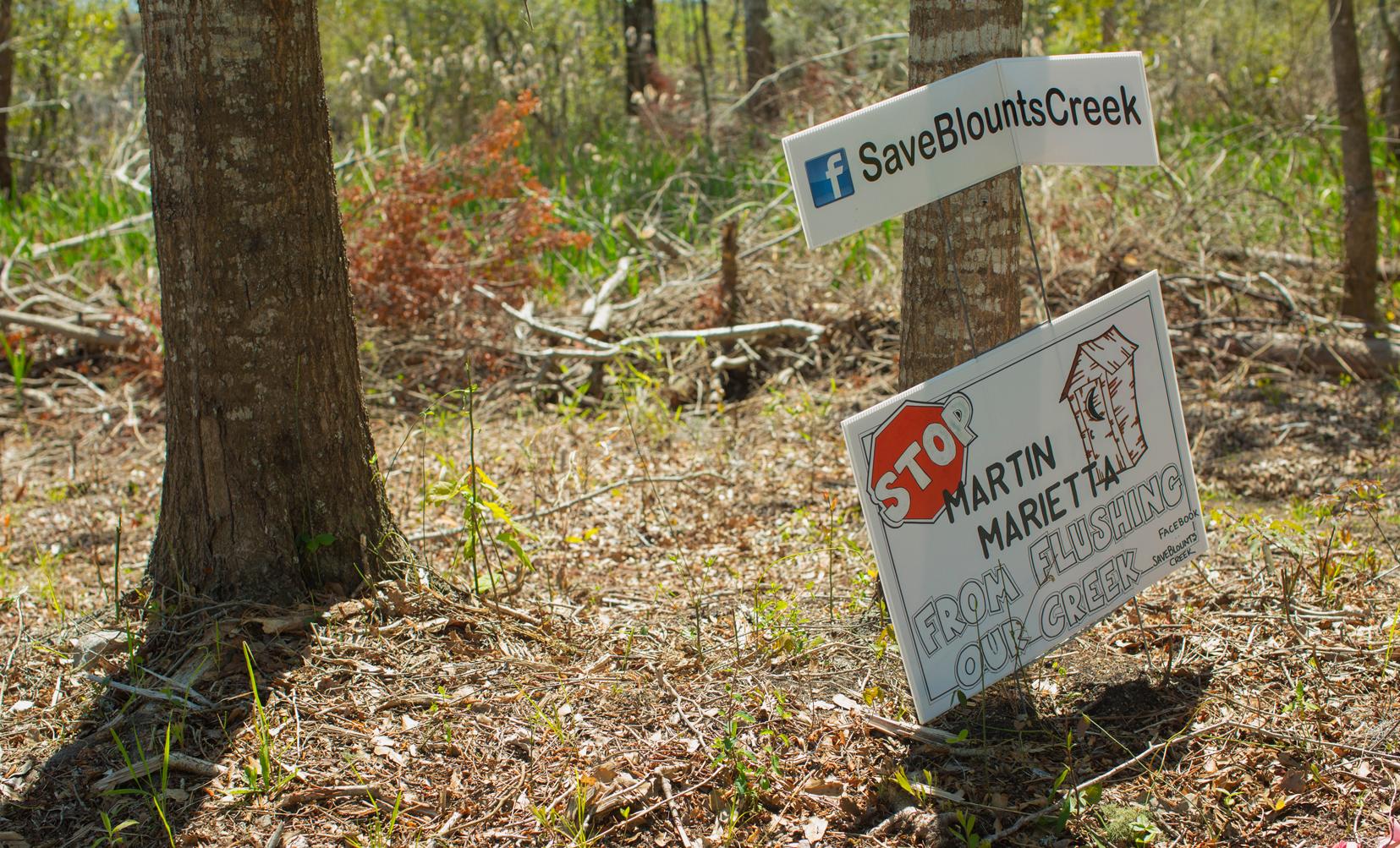Community unites against threat to Blounts Creek
Blounts Creek is a swampy, brackish North Carolina creek that flows through wetlands on its way to the Pamlico River. The creek’s unique mix of saltwater and freshwater fish surrounded by densely forested shores attracts visitors from across the region. Long-time residents have enjoyed fishing and boating the creek for decades and that small, but vocal, community has grown over the years. Many retirees have been drawn to living by the creek for the abundant fishing and other outdoor activities.
Blounts Creek is just something you have to experience,” said Bob Daw, who spent many weekends at a fishing camp on the creek before he and his wife built a home there. “It’s got its own soul and mysteries.
It’s heavenly,” agreed Blounts Creek resident Beth Harden. “It’s just amazing, the wildlife and the diversity. It’s gorgeous. When you go further up the creek, it’s like you go back in time.
When Daw first started visiting the creek, there was little more than a fishing camp with concrete shanties and about six single-family homes. Now, he said, there are three good-sized subdivisions, along with a marina and several other businesses.
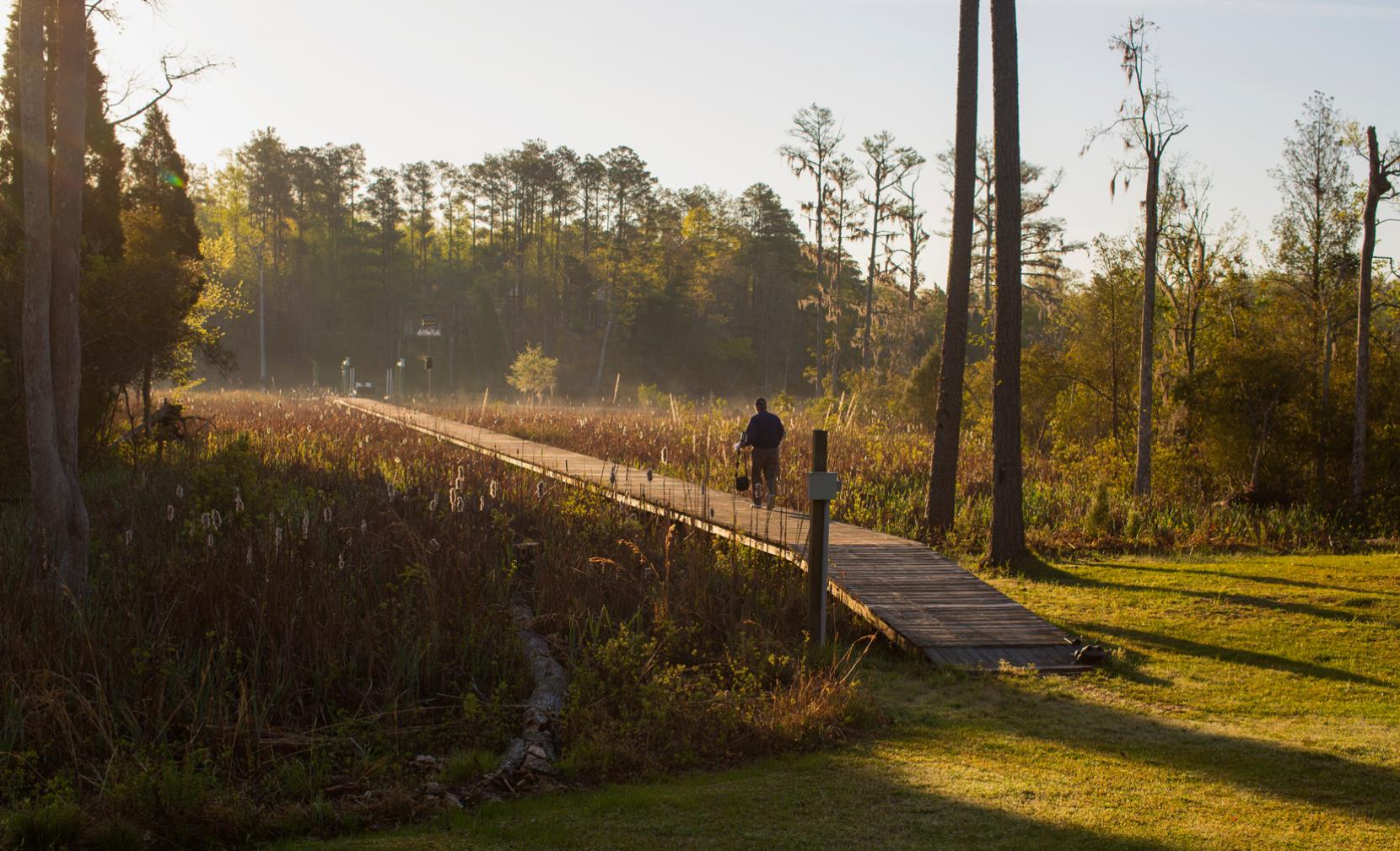
Bob Daw walks out on his dock to check his lines.
When Martin Marietta wanted to put in a limestone mine and divert 12 million gallons of mining wastewater into the creek’s headwaters, the community banded together and rose up to oppose the plan. The fight has been raging since 2011, and the community has scored some major victories recently thanks, in part, to SELC’s legal expertise.
“Martin Marietta dragged this out for six years hoping the local yokels will give up and go away,” said Bob Boulden, who runs a charter boat business on the creek. “That’s not going to happen.”
The mine’s plans would devastate the creek, said Heather Deck, executive director of Sound Rivers, a nonprofit organization that monitors and protects the Neuse and Tar-Pamlico River watersheds. “Blounts Creek is a small coastal plains stream that starts in a very wild, rural area,” Deck said.
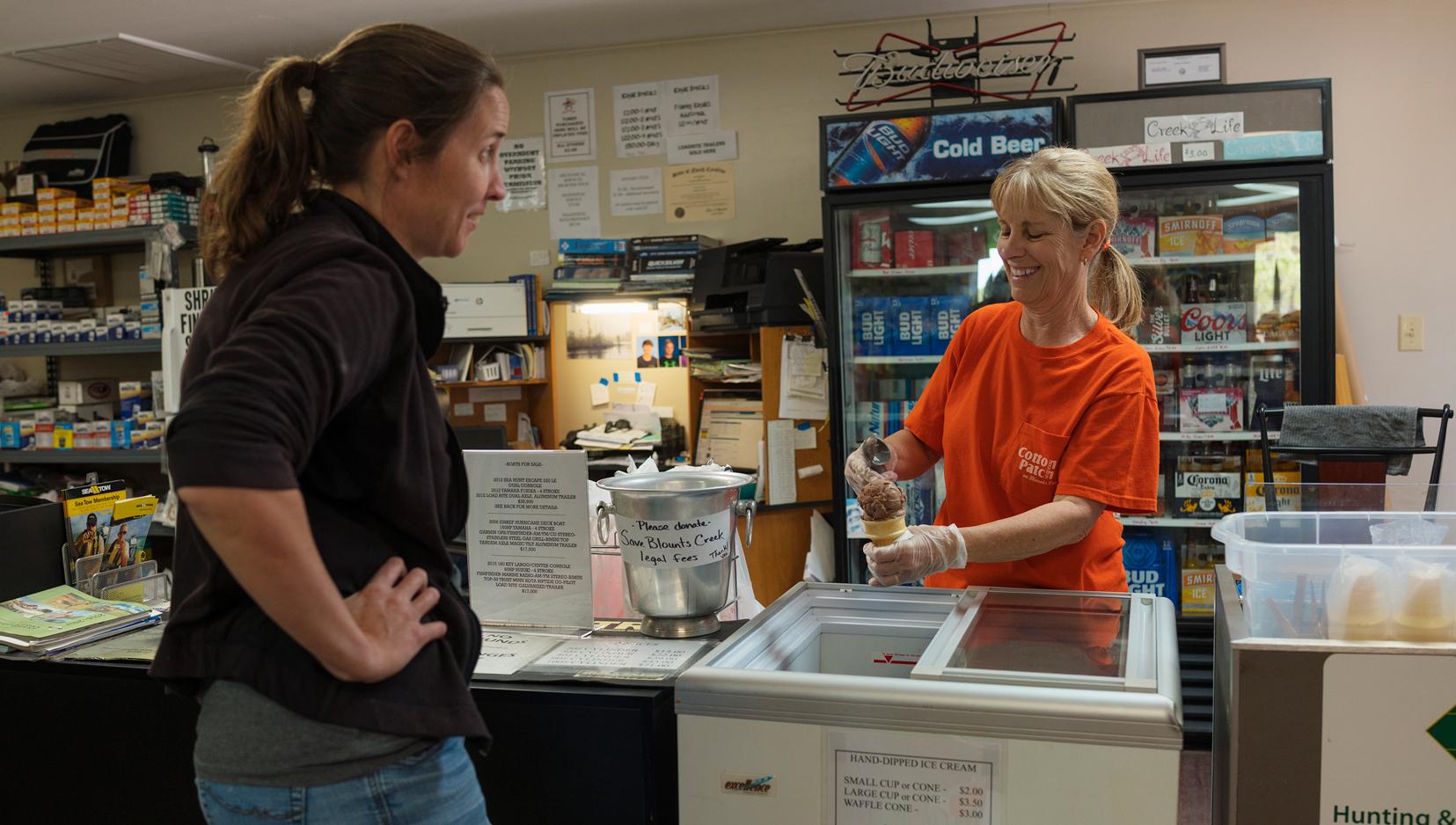
Heather Deck, executive director for Sound Rivers, chats with a Blounts Creek resident.
Some of the features that make Blounts Creek unique include its depth and the mix of fresh and salty water, all of which make it attractive for a wide variety of wildlife, including fish, and the people who like to catch them.
Dumping so much fresh water into the swampy stream would fundamentally change the stream and the fish in it.
“It would damage the creek and damage the fisheries,” Deck said. “It would change the stream in such a way that it would not look like any normal stream in coastal North Carolina.”
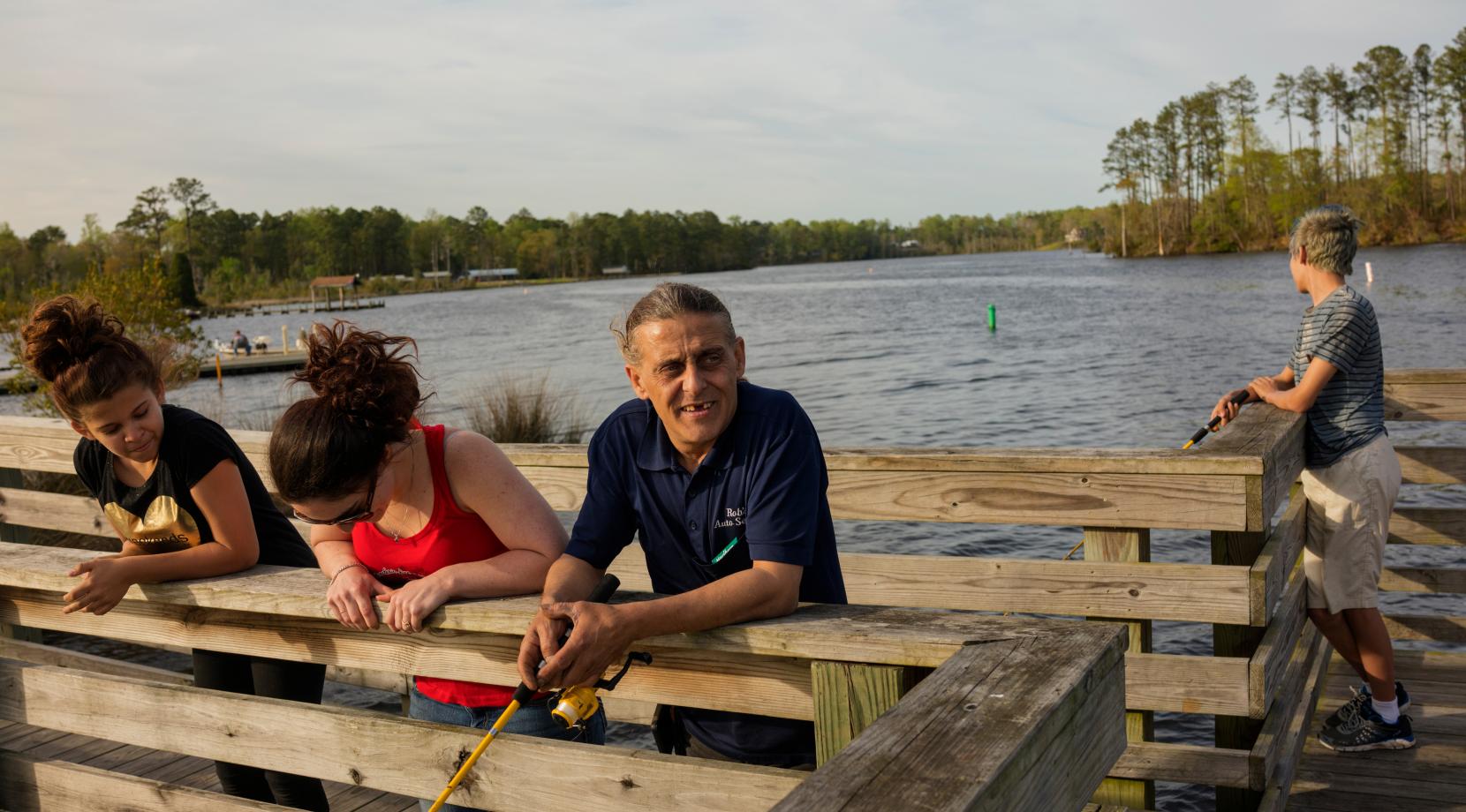
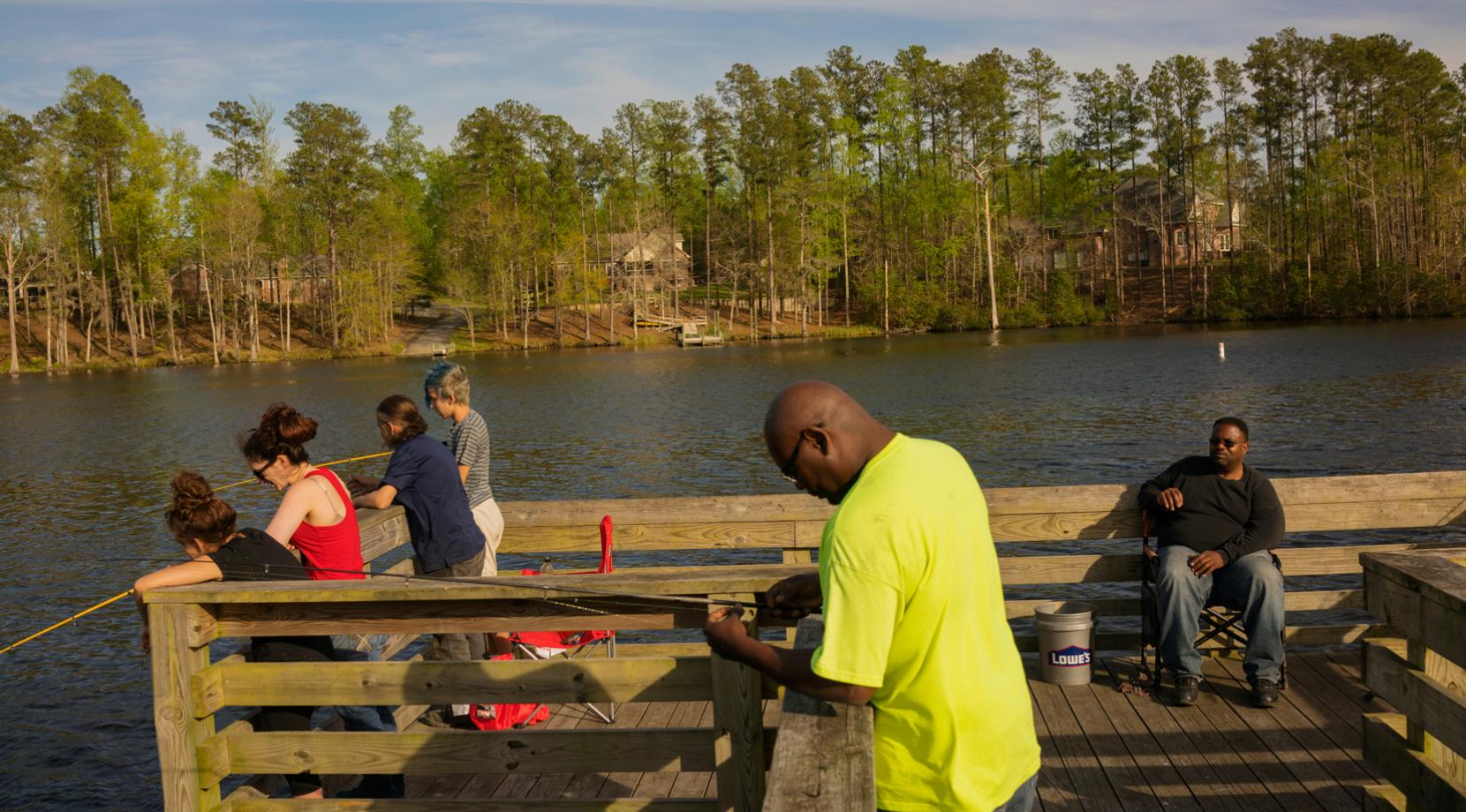
Daw said the inundation of fresh water would raise the acidity of the stream and drive off a lot of the fish and crabs that attract people to the creek.
“It would be a slow death,” he said. “Probably 80 percent of the fish people catch here are salt-water fish, just like you catch in the ocean. The creek also has a lot of blue crab in it. People catch crab off their docks.”
Jimmy Daniels and his wife built Cotton Patch Landing, the only marina on Blounts Creek, about nine years ago.
“It’s just a unique creek,” he said. “The diversity of fish is really something, trout, flounder, stripers, perch, bass. You can catch freshwater fish and saltwater fish the same day.”

Jimmy Daniels, left, heads to the water along Blounts Creek with friends.
There’s lots of other wildlife, too, Daniels said, especially birds.
“You see eagles, osprey, egrets, and pelicans,” he said. “Everybody knows the uniqueness of this creek. They really don’t want to see it changed.”
The community isn’t opposed to the mine, several residents said. They just want the wastewater from the mine sent somewhere it won’t do so much damage.
We made it a point not to oppose the mine itself,” said Ed Rhine, a retired educator who moved to Blounts Creek about nine years ago. “But we expect them to do it in a responsible way. Dumping 12 million gallons of fresh water into a brackish estuary would have bad consequences.
Rhine, who taught math and science, including wetlands ecology, said it isn’t just the chemical changes from the inundation of fresh water that would change the creek.
“Everything changes,” he said. “The flow would create cavitation, making the water dirtier and muddier. A change of that magnitude would have dramatic effects on this creek.”
The important thing for them to understand is that we’re not going to go away,” Rhine said. “The community will continue to be involved. If they want to have a mine here and want to be good neighbors, they will have to work with us.
The fight has taken some twists and turns over the years. Twice, an administrative law judge ruled that Sound Rivers and the North Carolina Coastal Federation, represented by SELC, had no standing to challenge permit.
Last year, that decision came before Superior Court Judge Joshua Willey, Jr. In December, Willey overturned the administrative law judge’s ruling that cut locals out of the process, and vacated the mine’s wastewater discharge permit. Then, in mid-February, Willey turned down a request by Martin Marietta to stay his decision on the permit. SELC Senior Attorney Geoff Gisler, who is representing the Sound Rivers, the North Carolina Coastal Federation, and their many members who live near the creek, describes the reaction from the community to the decision.
After hearing the news, I spoke with Jimmy Daniels and what he said to me captures what the community felt. He said, ‘I feel like I can breathe for the first time in four years.’
Since then, the mining company has appealed to the North Carolina Court of Appeals. SELC continues to represent the conservation organizations and their members in the ongoing legal challenges.
The ball’s kind of in Martin Marietta’s court,” Daniels said. “They had alternatives they could do besides just dumping the water into our creek. They could inject the water into wells or divert it to Swift Creek, which is a lot bigger creek, a freshwater creek, with a bigger watershed. We’ve tried to sit down with Martin Marietta and try to work out an alternative. They’ve rejected every time we’ve tried to talk to them.
Other residents also said Martin Marietta had other alternatives.
“Why can’t they balance what they need to do with what’s the right thing to do?,” asked Rhine.
The battle for their creek has strengthened the community, Daw said.
“It’s been a tough go,” he said. “But we’ve got people from all these subdivisions and the county and different organizations that’s helped us and joined us. It’s definitely formed a community bond. Everybody knows everybody now.”
And the community has found strength in those numbers.
The important thing for them to understand is that we’re not going to go away,” Rhine said. “The community will continue to be involved. If they want to have a mine here and want to be good neighbors, they will have to work with us.

Proof of successful fishing outings lines a wall in Blounts Creek.


